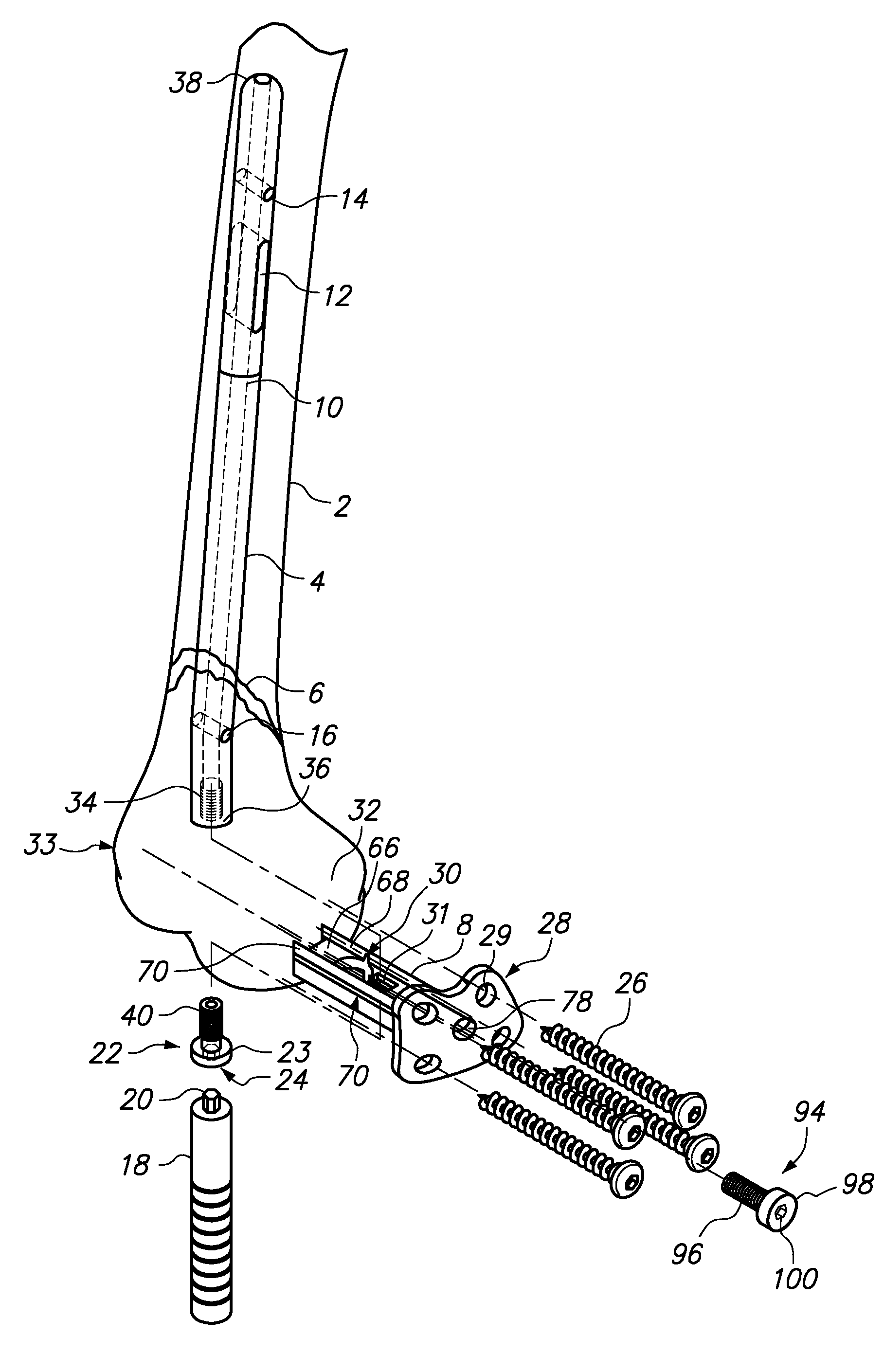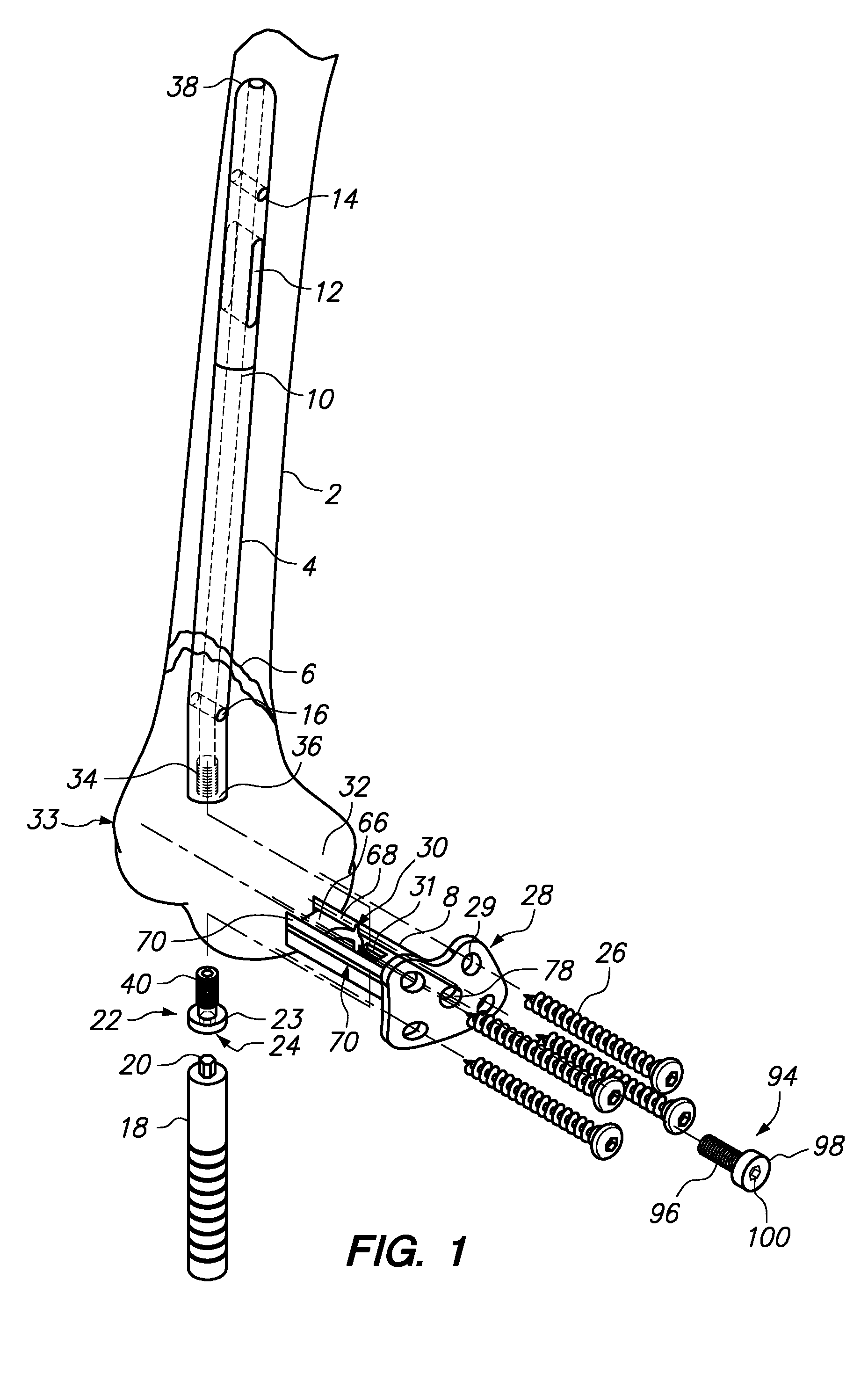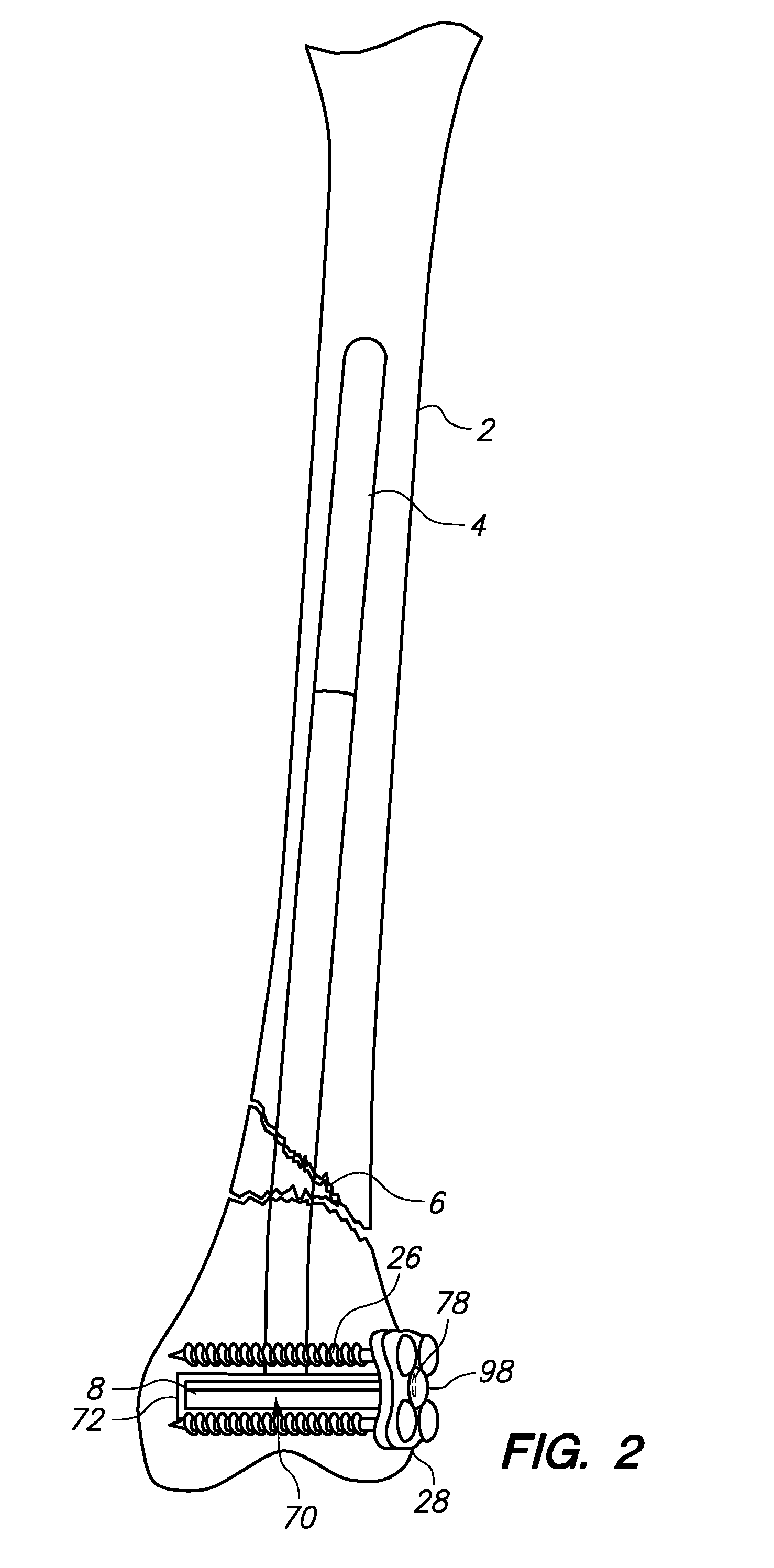Bone Fixation Assemblies and Methods of Use
a technology of bone fixation and assembly, which is applied in the field of bone fixation assembly, can solve the problems of weak implants, difficult for orthopedic and difficult for operating surgeons to fix distal femur fractures
- Summary
- Abstract
- Description
- Claims
- Application Information
AI Technical Summary
Benefits of technology
Problems solved by technology
Method used
Image
Examples
Embodiment Construction
[0023]Embodiments of the present invention are described below with reference to the above described Figures. It is, however, expressly noted that the present invention is not limited to the embodiments depicted in the Figures, but rather the intention is that modifications that are apparent to the person skilled in the art and equivalents thereof are also included.
Intramedullary (IM) Nail / Rod
[0024]FIG. 1 depicts an exploded view of a preferred IM nail 4 and blade 8 assembly being positioned in a patient's left femur 2 to treat a fracture 6. As used herein, the terms “intramedullary nail,”“IM nail,”“intramedullary rod,” and “IM rod” can be used interchangeably. The IM nail 4 is preferably configured and selected to be positioned into the patient's medullary cavity of the femur 2 such that it passes through the fractured area 6 of the bone and couples to a blade 8 at its proximal end 36. Accordingly, while the majority portion of the IM nail 4 should extend in a straight line, in pre...
PUM
 Login to View More
Login to View More Abstract
Description
Claims
Application Information
 Login to View More
Login to View More - R&D
- Intellectual Property
- Life Sciences
- Materials
- Tech Scout
- Unparalleled Data Quality
- Higher Quality Content
- 60% Fewer Hallucinations
Browse by: Latest US Patents, China's latest patents, Technical Efficacy Thesaurus, Application Domain, Technology Topic, Popular Technical Reports.
© 2025 PatSnap. All rights reserved.Legal|Privacy policy|Modern Slavery Act Transparency Statement|Sitemap|About US| Contact US: help@patsnap.com



